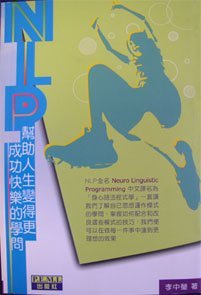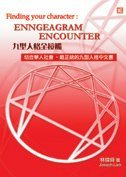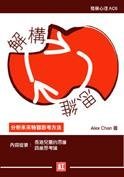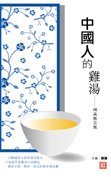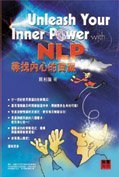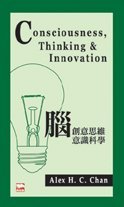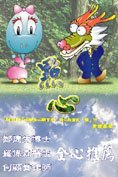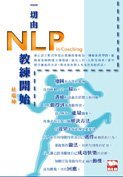Imagery has been an important medium for communication among Asians like the pictogram or hieroglyph from which the Chinese language is based upon. Therefore Asians in general are rather familiar with imageries and easy to work with them. Since Jungian theories of transformation is based on the symbolic quest of an individual towards wholeness that usually use imageries for expression rather than the verbal language. I explored into Jungian analytical psychology and later trained as a sandplay therapist and a Jungian analyst trying to tap into the unconscious realm of my clients who are almost all Asians. I believe that all creative measures are means to communicate clients’ psychological manifestation for our mutual understanding and to further their process of transformation as an individual. Through the sandpictures, artistic paintings and dreams--unconscious materials--from my clients, I have the privilege to glimpse into their unconsciousness, and to accompany them on their path towards the healing of their psyche.
Being situated in the Asian cultural milieu, many of my female clients experienced similar wounds and traumas caused by the oppressiveness of our Asian elements, such as gender bias, patriarchal dominance, subservient womanhood, distorted femininity, and excessive filial obligation—the cultural elements that manifested in their oppressive forms. Often their psyches are fragmented in childhood by these various oppressive forces. My clinical work is to contain them in a safe environment and to help them to discover their broken pieces, so that they can mend their pieces to restore their psychic wholeness, similar to the Japanese art of Kintsugi, an artistic skill that restores the broken pieces of a vessel to recreate a new artwork different from the original.
I select four cases for this book as they encapsulate experiences that many Asian female can easily echo with. They are all between 35 to 46 years old with various marital status and their length of therapy ranged from 3 to 15 years. They all suffered psychic injury from patriarchal dominance commonly found in Asian culture. They first came for help with an aim to cope with their crisis and later for their adult development. These four Chinese females make use of sandpicture, art work and dreams to become aware of their unconscious, and to engage an internal dialogue with the imageries for deeper reflection. Through in-depth Jungian analysis via creative works, they gradually discovered the suppressed wounded parts. Eventually they integrated their shadowy parts and reclaimed the wholeness of their womanhood. They can then be authentic to make choice for their life journey.
These four heroines exemplify the struggle of Asian women to be individuated as a human being. Their journey path manifested different important aspects of human individuation. Their stories show how their creative art and sandpictures helped to contain and to express their deepest desire to live authentically in the midst of their trauma. The imageries that they created indeed are clear evidences of transformative process. The first four chapters describe the journeys of the four women with their own conclusions. I had published some small segments of their journeys in professional Journals. Chapter Five is the continuation of the case from Chapter Four. It focuses on amplifying the client’s dreams from the cultural perspective along with the teleo-futuristic exploration for the potential transformative development of our Asian culture.
As they are all situated in Asian cultural settings, I sincerely hope that their stories can inspire Asian readers, be it male or female, to strive for their authentic selfhood vis-à-vis our Asian heritage. As for my colleagues in the mental health field, regardless of which school of psychotherapy you are versed in and what cultural milieu that you are familiar with, I wish to share with you my clinical journey in psychotherapy among Asian women. Although such healing process has been well versed in Western literatures and commonly discussed in clinical writings in the West, I hope that these four cases can contribute to the general discussion by having clinical examples from the Asian sociocultural environment highlighting the applicability of Jungian theories in Asian settings as well as the unique cultural characters from Asia which the clinicians have to be caution of.
I am grateful for the four clients who are willing to give their consent to share their inner journey. I appreciated that Revd. Dr. Wat Wei-ho, President of the Bethel Bible Seminary, and Dr. Marta Tibaldi, a senior Jungian analyst of AIPA-IAAP , had given their kind words in their Forewords. I am also grateful for my mentor, Dr. Jean Kirsch, M.D., a senior Jungian analyst from CGJISF-IAAP, who had mentored me patiently throughout the years to develop my clinical skills.
This book consists of two volumes, being one with text, the other with images. Two volumes are read side by side for full understanding.
Adelina Wong Wei-kwan JA, CST-T, MFT
Adelina has a great interest to learn of her existence as a human being. She began her career in Physical Therapy to explore the kinetic mechanism of healing by serving as a Physical Therapist of American Physical Therapy Association (APTA) in hospitals in Hong Kong.
Adelina was never contended with her knowledge only on the physical being, she continued to explore how the family dynamics influenced one’s psychological being through further studies in Family Therapy. Adelina has been a Marriage and Family Therapist since 1986, and an Approved Supervisor of American Association of Marriage and Family Therapy (AAMFT) in the 90’s.
Due to the crisis in her family, Adelina experienced a major depression during these years. She found the light in the dark period through the Jesuit Spiritual Exercise which led her to complete her training as an Ignatian Spiritual Director.
Adelina continued to explore into human psyche through Sandplay Therapy and Jungian Analysis. She became a Certified Sandplay Therapist in 2010 and a Sandplay teacher of International Society of Sandplay Therapy (ISST) in 2015. In the following year, Adelina was certified as a Jungian Analyst of the International Association of Analytical Psychology (IAAP).
All the clinical works enriched her inquisitive search of the wholistic human existence: body, mind, psyche, and spirit. Adelina reflected the inner transformative process of her clients and had published several academic papers.
Besides her private practice, Adelina has given presentations in various conferences, and teaching in Sandplay Therapy and Jungian Psychology in Hong Kong, Malaysia and Indonesia. Her many other interests include Chinese calligraphy and pottery. Many of her art works were selected to display at various art exhibitions.
“Based on her four-decades of clinical experience, Ms. Wong has a paradigm of documenting the clinical cases of Asian women who often utilize imaginary than verbal expression. This volume highlights four cases which reflects the deep inner struggles and emotional scars that countless Asian women face. This work broadens our clinical perspectives and offers valuable, effective therapeutic approaches. I highly recommend this volume for any serious clinicians in mental profession in Asia or those who likes to have an in-depth understanding of clinical dynamic of femininity in Asian culture. This volume is a feast of clinical hermeneutic of non-verbal expressive materials and undoubtedly a book not to be missed!”
“I had the privilege to be appointed as the IAAP Liaison Person of the Hong Kong Institute of Analytical Psychology in 2010 and at that time I personally met and worked with Adelina Wong Wei-kwan during her Jungian training. In the six years I held office, in addition to her exquisite hospitality, I was able to appreciate her intellectual curiosity, critical reading skills, and sensitivity to her clients and their suffering, together with the ability to accompany them along their path of self-knowledge, transformation and individuation from a personal, cultural and collective perspective: qualities that are all brilliantly reflected in the two volumes of this book.
I am certain that reading The Kintsugi Art of Psychic Restoration: Jungian Imagery Approach of Healing on Four Asian Women by Adelina Wong Wei-kwan will be of help and inspiration to Oriental women in their personal and cultural path to individuation. It will, equally, be a valuable cross-cultural resource for all those who enjoy confronting the transformative power of Jungian analysis and deep images.”
- 目錄
- Chapter One Ada’s Story: Recovering the Feminine Core of a Survivor of Early Trauma
- Chapter Two Jane’s Story: Leaving My Father’s House
- Chapter Three Jo Jo’s Story: Being Contained in the Liminal Phase of the Bereavement
- Chapter Four Wendy’s Story: Initiating Her Motherhood
- Chapter Five Jungian Individuation and Cultural Transformation

 簡體中文 (即將支援)
簡體中文 (即將支援)

